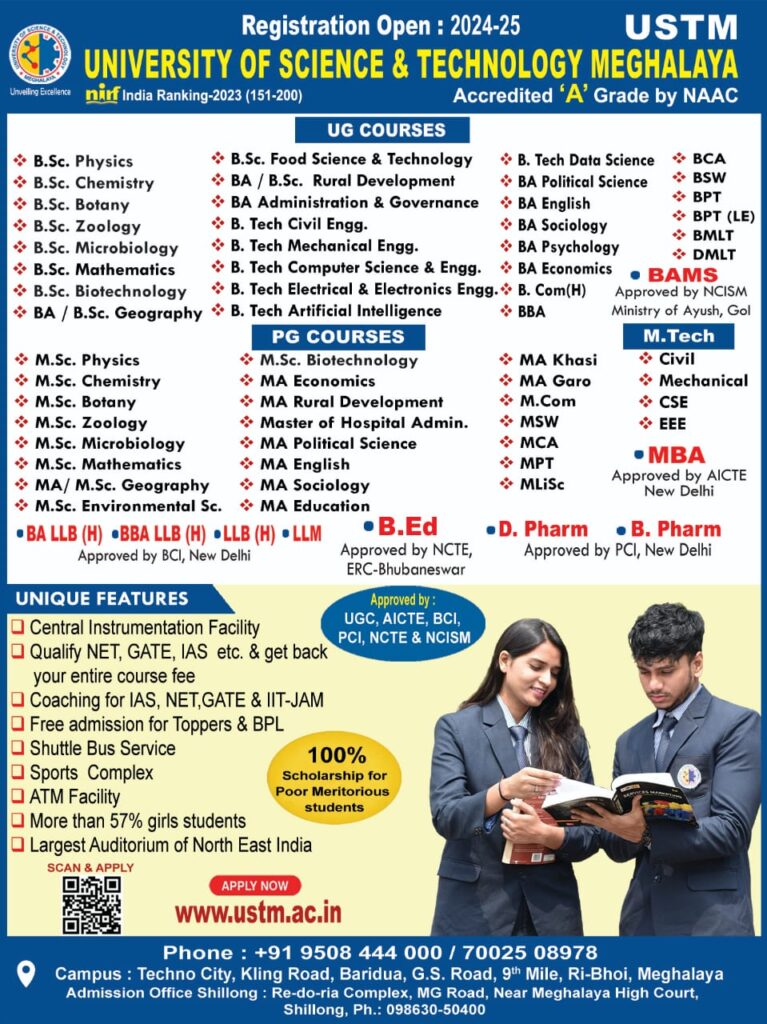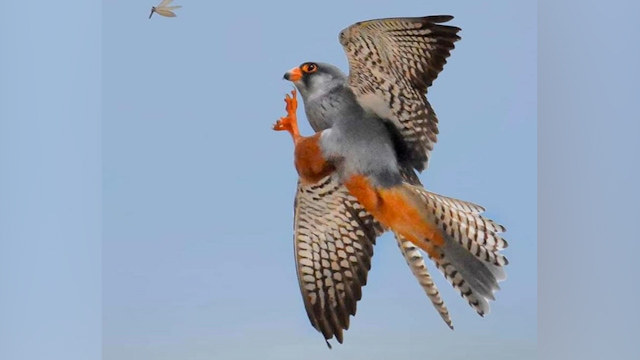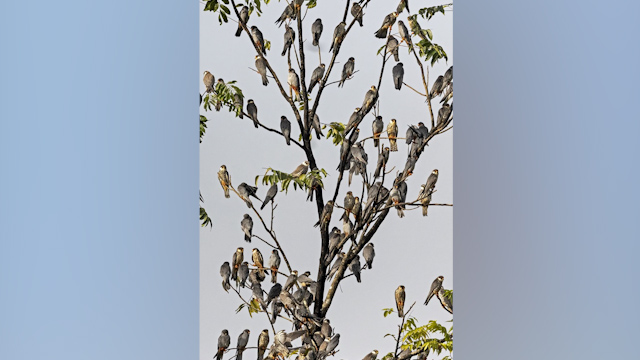Guwahati, June 16: To refuel, says a study.
A study estimated that 1,000,000 Amur Falcons stopping over for an average of 15 days in the region consumed approximately 67– 134 metric tons of alates (approximately 1 to 2 billion individual alates).
The Amur Falcon is a transcontinental migrant that undertakes a nonstop flight of nearly 6000 km from its stopover sites in Northeast India to the east coast of Africa, a trip that includes the longest overwater flight of any raptor.

The study done by scientists from the Wildlife Institute of India recorded the diet of Amur Falcons during their autumn passage at stopover sites across Northeast India. The researchers collected and examined 1200 pellets to identify prey remains in the diet of Amur Falcons from three major stopover sites in Nagaland in 2017 and 2018. Additionally, in 2019, they examined 200 pellets each at two other sites in the neighbouring states of Assam and Manipur. The study has been published in the Journal of Raptor Research.
The study was carried out across two seasons in October–November of 2017 and 2018, during Amur Falcons’ stopovers at three major stopover sites in Nagaland State: Pangti, Yaongyimchen, and Hakhizhe in Wokha, Longleng, and Dimapur districts, respectively. Additionally, in 2019, the scientists sampled two other major sites: Umrangso in the Dima Hasao district of Assam and Puching in the Tamenglong district of Manipur, both of which adjoining Nagaland.

“We only recorded insect prey belonging to five taxonomic orders: Orthoptera, Isoptera, Hemiptera, Coleoptera, and Hymenoptera, with Isoptera being dominant in the diet of Amur Falcons. The frequency of occurrence of Isoptera (termites) was the highest (87%) across years and across all stopover sites in Nagaland; diets were similar at the two other sites in Assam and Manipur” the study says.
Termites are generally known for their high nutritional properties as they are particularly rich in easily digestible. In Nagaland, the termite species O. feae and O. horn I emerge en masse in October and November with the retreat of the southwest monsoon, an event that coincides with the arrival of Amur Falcons.

The researchers identified the species of termites in the diet of Amur Falcons as Odontotermes feae and O. horni, the mass emergence of which coincided with the falcons’ arrival in the region.
Birds on migration are reported to meet their energetic demands by making stopovers to replenish energy reserves to power their onward flights.
“Stopping over at resource-rich sites and those that are predictable in terms of food availability is therefore likely an important strategy adopted by migrating birds. This appears to be the case with Amur Falcons on migration, with entire populations numbering in the hundreds of thousands on their southbound passage” the study found out.

They funnel into Northeast India to stop over for about 2 weeks or more, and as a result the region, particularly Nagaland is now popularly known as the “falcon capital of the world”. “The findings of our study clearly indicate that Amur Falcons stop over at select sites in Northeast India not only to rest but more importantly, to refuel—a strategy adopted by the falcons before undertaking their nonstop leg of migration ahead” the study says.
“Our results highlight that Amur Falcons during their ranscontinental migration rely on specific sites to stop over and replenish their energy before undertaking the 3500-km long Arabian Sea crossing. This has important implications for strengthening the conservation efforts across all stopover sites in Northeast India, suggesting that the specific needs of Amur Falcon populations pass[1]ing through the region may be highly localized” the study said.
Read: Cachar and Jiribam SPs Hold Crucial Meeting to Ensure Security and Peace in Border
WATCH:
Find latest news from every corner of Northeast India at hubnetwork.in, your online source for breaking news, video coverage.
Also, Follow us on-
Twitter-twitter.com/nemediahub
Youtube channel- www.youtube.com/@NortheastMediaHub2020
Instagram- www.instagram.com/ne_media_hub





